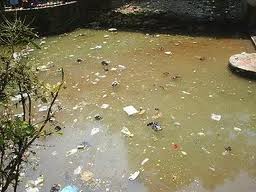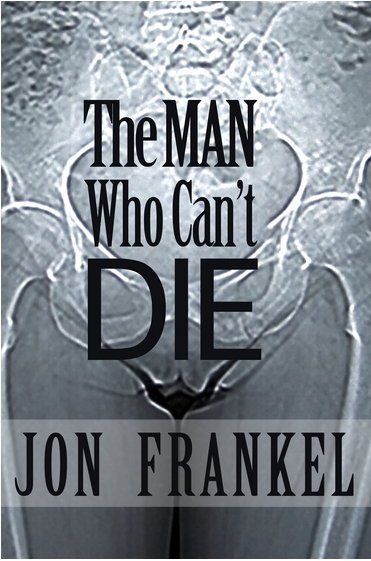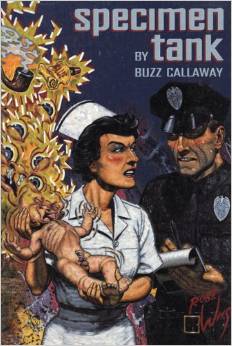REVIEW OF SO MUCH PRETTY
Two things first: Cara is a friend of mine, and this review contains spoilers galore. I can’t pretend to any true objectivity then. But I will be honest, I felt some trepidation reading my friend’s book. It was not on account of her technical abilities as a writer. Our friendship is fed by a certain shared aggressive tendency, sarcasm, and the defensive postures of lifelong outsiders. But the heart of it is her power as a writer, a shared love of the language and the process of writing. So that wasn’t it at all. It was subject matter. I like all kinds of books, but I don’t read many contemporary crime novels and I prefer to read crime novels set either in the future or in noir demimondes.
Hoffman’s So Much Pretty is a crime novel set in upstate New York between the years 1993 and 2009. Upstate New York is a science fictional noir demimonde of course. Those of us who live here know Robert Kennedy wasn’t joking when he got it designated as part of Appalachia. The pathologies associated with the urban underclass are rampant in rural America, and the faces are white. AIDS, heroin, crack and meth addiction, domestic violence, teenage pregnancy, Darwin Award style acts of mindless self-destruction, senseless arbitrary violence and industrial pollution are just part of the scenery. And so are obesity and self-righteous stupidity. People cling to their guns and bibles here, and also to their schnapps shots, gas leases, and ATVs.
Living in this demimonde are a significant plurality of ordinary, conservative middle class people who work in the universities and the few factories left, or utility companies. There are contractors. Lots of contractors. And a few old time farmers eking out a living on this difficult land. It’s useful sometimes to remember that the Iroquois were tough motherfuckers. Also living here are the professors who teach at these colleges and the counter culture. Radicals, crafts people, artists, intellectuals and religious nuts have been attracted to Upstate ever since Sullivan’s soldiers laid waste to the land.
This is the land of So Much Pretty, a book about the imprisonment, gang rape and murder of Wendy White, a bright, loving woman from a middle class family in Haeden, NY.
At the heart of the novel are the reporter Stacy Flynn and the brilliant child and young woman Alice Piper. Stacy Flynn is a reporter who moves to Haeden from Cleveland to work at a small puff-piece local paper. She is ambitious, in search of a big story, and she finds it when Wendy goes missing. Most people believe Wendy ran away, except for Flynn and Wendy’s family. This puts her in conflict with just about everyone, especially the former editor of the newspaper who wants her to continue reporting on pancake breakfasts, and to leave things like the ever present effluent of a factory dairy farm alone.
Alice is the child of Claire and Gene Piper, utopian radicals who move to Haeden when Alice is 2, to escape the complications and seductions of urban life and start an organic farm. The Pipers are doctors, self-absorbed and insular. On their land Alice enjoys a pastoral childhood. Her father teaches her to be an acrobat and she has the run of the farm and the barn with her friend and neighbor, Theo. Theirs is a relationship like Van and Ada’s in Nabokov’s Ada. They roam the land and play, well into adolescence, imaginative games that bewilder their peers. Despite their precocity they are not unpopular children. Alice is a star of the swim team; she is involved in the community and a brilliant student. She reads through her parent’s political library, but her take on the anarchist and radical ideas she is exposed to is shockingly different than what her parents intend.Â
Wendy has taken up with Dale Haytes, whose family owns a factory dairy and are the richest people in town. The poisonous odor of the manure collect ponds pervades nearly every scene of the book. The Haytes are typical cornfed Americans, proud and obtuse. Wendy feels lucky to have fallen in love with Dale, Beverly and Jim’s oldest son. It is never made clear in the narrative whether it is Dale or his younger brother Bruce who kidnap her and keep her in a crawl space, beaten and drugged. Hoffman doesn’t dwell on this. She gives as much detail as is necessary to feel sick without exploiting Wendy’s terror.
Because it is told in a documentary style, with alternating chapters, the novel is slow to build up to what, in the middle, becomes a driving suspense story. The Pipers and the Haytes are types at first, easily identifiable. It is Wendy, Alice and Flynn who temper these types, who give them depth. Alice as she matures becomes a compelling intelligence, constantly probing her parents’ certainties. Her relationship with Theo grows as they grow and their world of Wind in the Willows accommodates their sexual feelings, which in turn become an enduring and soulful love. But Alice is a thinker, and she has a sense of logic and justice. She is not a romantic in any sense and she lacks the context of a complex world to test her ideas against. She is both morally consistent and a moral monster.
Wendy’s body is found dumped by a creek. Alice realizes then that she has been gang raped and murdered by a group of boys she knows at school. And she decides then that the only just thing to do is kill those boys, which she does, at school. She plans the murder well. Her arrest and escape end the novel. It is extremely unsettling to find myself rooting for a seventeen year old girl to murder 7 teenage boys, but Hoffman brought me to that point.
Much has been written about this novel and rage, including by Hoffman herself. I don’t find a lot of rage in the book. The characters experience hatred and rage, but the narrative itself is cool throughout. It shifts from point of view to point of view in a calm, meticulous way, laying out what is a common and unbearable tragedy both of our particular time and place and also of all time. It reminds me as much of Aeschylus and Shakespeare as it does the contemporary novel of female murder.
The book strikes an antithetical pose to our obsession with the serial killer. In America, the serial killer is denatured. We’ve turned this rare beast into our Dracula, fun and scary. I watch a show like Dexter and am sickened by it, though I accept it is entertainment: serial killer as literary device. And it works. Except that there aren’t a lot of serial killers out there, and those that are didn’t have loving step-fathers who taught them only to do what Alice Piper does, murder the guilty.
And even if I am rooting for Alice, Alice’s mother does not. Cara Hoffman might have been rooting for her, but her book does not.
If serial killers are rare, the killers of women are not. So Much Pretty makes the case, as Hoffman does in her interviews and blog pieces, that sexual assaults and murders of women, especially by men who know them, are common and unremarkable. Serial Killers are glamorous. Men who imprison women, rape and murder them live next door, and down the street, and the next street over. I didn’t really need or want a book to tell me this, and I expected that to be a flaw, but Hoffman doesn’t tell us this. She constructs, from life, an exciting, compelling crime drama that doesn’t infest itself with the sadism of the crime but rather creates a realistic social context for it, in the literary tradition of Dos Passos. Then all the power of her art is devoted to the narrative that unfolds with the horrifying inevitability of Oedipus Rex. And that art is considerable. For every sentence doesn’t burn with indignation but rather with the heat and glow of English molded to its purpose and lovingly burnished by a woman who knows the craft of writing is alchemy.
Â





Thank you Jon,
This is a beautiful and gracious review and I am really touched. Remembering some of our first obsessive conversations about dystopia and noir and alchemy, about the academy and the institutionalizing of intellect. So inspiring and so much solidarity.
you got it!
How about American women abroad? I’ve heard so many arguments about Amanda Knox. I think she’s innocent. Among those of us who think she’s innocent there are many reasons for thinking she’s been framed. One person blames it on Catholicism, another person blames it on Communism, and a third person blames it on Facebook.
Magnificent review.